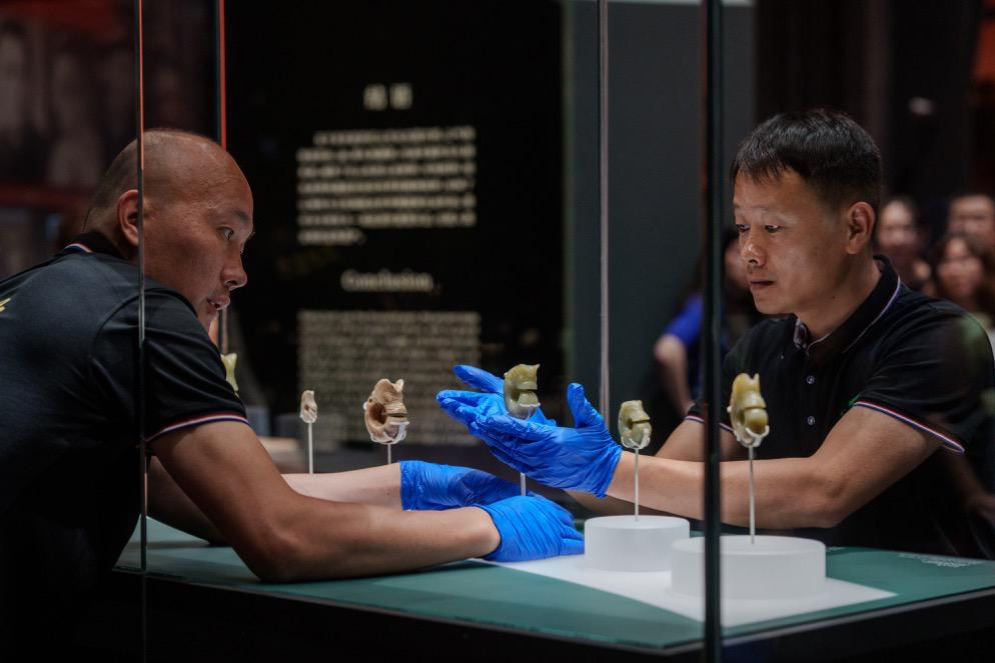Expert calls for reliable disease response system

Standard procedures needed to counter infectious outbreaks, prevent disorder

Consistent response procedures should be established at the national level to cope with major infectious disease outbreaks in the wake of the ongoing novel coronavirus epidemic, a senior expert said.
"In recent years, major infectious diseases such as SARS, ebola, bird flu and the novel coronavirus have kept causing outbreaks, which shows infectious diseases are not far away from us," said Chen Jianguo, vice-president of Huazhong University of Science and Technology, in Wuhan, Hubei province.
"We must draw lessons and establish a regular procedure to respond to similar major epidemics in case they happen… so every party, including the government, healthcare workers, communities and individuals, knows exactly what they can do to prevent disorder," he said.
The ongoing epidemic, being gradually brought under control in China with arduous efforts, has exposed weaknesses in China's public health emergency management and response for major infectious diseases, President Xi Jinping said at a national teleconference in February. Lessons must be learned to make up for deficiencies and to eliminate gaps in public health services, he said.
In an article on improving law-based epidemic prevention and control and the national public health emergency management system, Xi called for greater efforts in strengthening areas of weakness and closing the gaps exposed during the outbreak.
Chen, who is also president of Huazhong University of Science and Technology's Tongji Medical College, said a strategic reserve system for medical resources in fighting major infectious diseases, such as masks, protective gowns and medicine, should be established to cover major cities throughout China.
With the installation of the system, which would resemble the existing strategic grain reserve, authorities would be able to allocate emergency medical resources to outbreak sites more quickly, he said.
"This could help avert a shortage of materials and disorder in management at the early stages of outbreaks," he said. "We are now well capable of building such a mechanism."
Mao Qun'an, director of the National Health Commission's planning department, said on Wednesday that the commission is working with other central government departments on establishing an emergency reserve procedure for medical materials and equipment to make up for the shortcomings in the country's emergency medical equipment reserves.
To overcome the biggest public health crisis in China in 70 years, the Chinese government and military have mobilized national resources, including sending more than 40,000 medical workers to Hubei province, the epicenter of the epidemic.
Chen said many other gaps in the public health sector have been exposed by the epidemic, including slow reporting and response to public health emergencies and a lack of effective interactions between hospitals, centers for disease control and prevention and related government departments.
"With the arrival of an epidemic, hospitals are the first to sense it, as patients always go to hospitals first," he said. "Hospitals should improve collaboration with CDCs and health authorities so information about an epidemic can be verified and released as quickly as possible."
Meanwhile, more efforts are needed to improve the professionalism and capacity of CDCs so they can respond quickly and accurately once an outbreak occurs and give advice to high-level authorities, Chen said.
In addition, medical colleges should redesign curricula regarding major infectious diseases so all students can receive proper training and take measures to protect themselves against infection while providing medical care to patients in case of outbreaks, he said.
- CPC members work against the clock to restore normal life in rain-hit Hunan
- Ceremony commemorates legendary ancestor of the Chinese civilization Fuxi
- Former KMT chair leads Taiwan delegation to honor Fuxi, Chinese culture
- Shanghai conference discusses occupational mental health in China
- Qingdao Summit strengthens global ties through multinational cooperation
- Chinese vice-premier calls for championing humanity's common values, promoting multipolar world





































